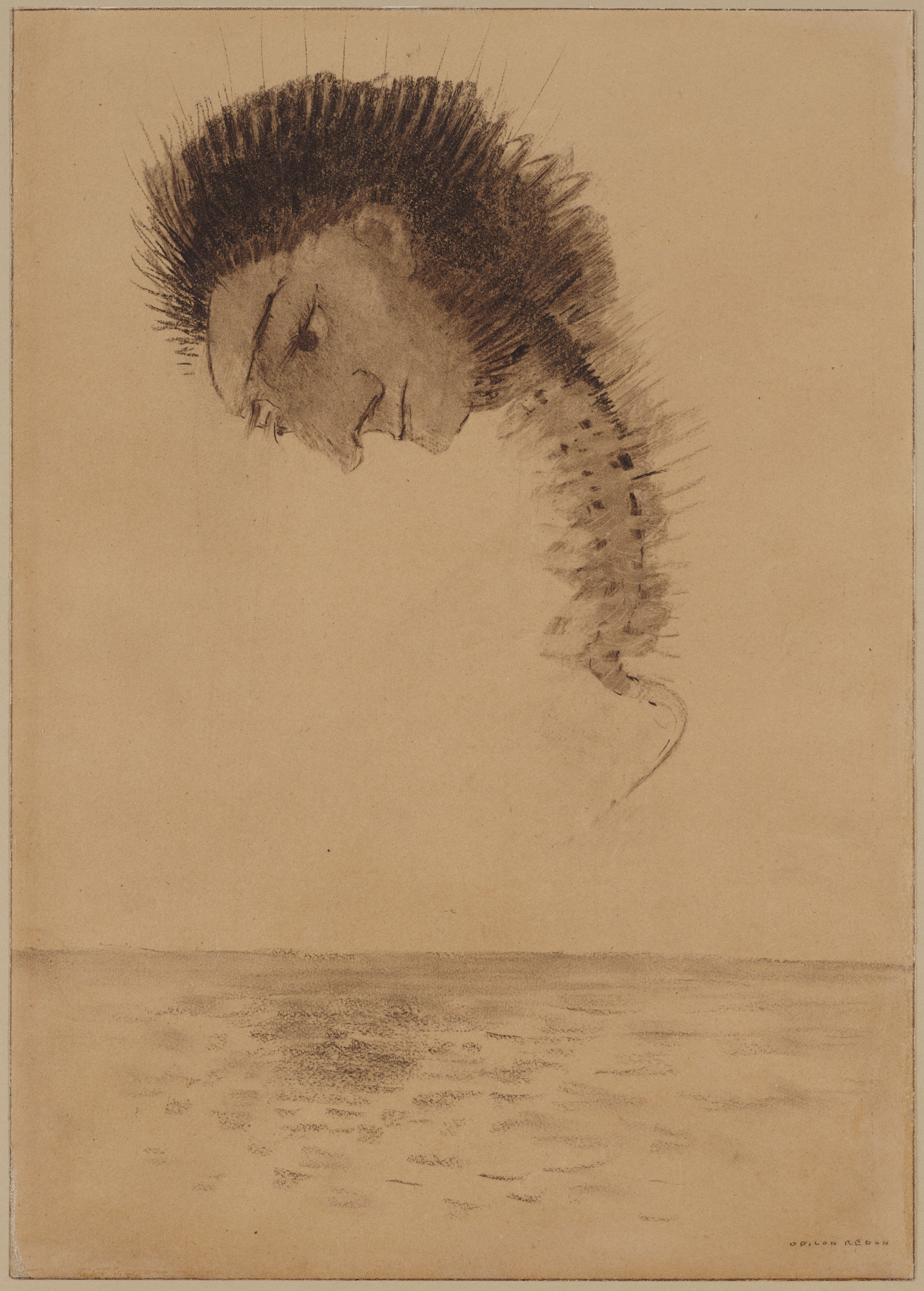adjective
- 1.(of a mythical animal) formed from parts of various animals."the design is based on a chimeric creature with the body of a turtle and the head of a dragon"
- 2.hoped for but illusory or impossible to achieve."the notion of tolerance is a chimeric dream"
Odilon Redon,
PLANT ANATOMY
Chimera, also spelled Chimaera, in botany, a plant or plant part that is a mixture of two or more genetically different types of cells.
A chimera may be a “graft hybrid,” a bud that in plant grafting appears at the junction of the scion and stock and contains tissues of both plants. Although such chimeras appeared adventitiously in times past, they were first seriously studied by the German botanist Hans Winkler in 1907. In his first experiments, black nightshade (Solanum nigrum) was grafted on tomato (Solanum lycopersicum), and at the nexus all the shoots were either of nightshade or of tomato except one; this, arising at the junction of the two tissues, had the characters of nightshade on one side and tomato on the other. Winkler called this shoot a chimera, because it was partly of one species and partly of another. In further experiments he gave certain of his graft hybrids special names. Another botanist, Erwin Baur, later provided evidence that two plants to which Winkler had given special names were built up of a core of tomato with a skin of nightshade one and two cell layers thick, respectively, and two others of a core of nightshade with skins of tomato one and two cell layers thick. Thus in a chimera the components maintain their identity but are arranged in a definite pattern at the growing point.
Chimeras may also arise by a mutation in cells of a growing region. The new kind of tissue may be conspicuously different from the old (as when it is colourless instead of being green), but far more commonly the difference is evident only on special investigation, as when the number of chromosomes is altered.



